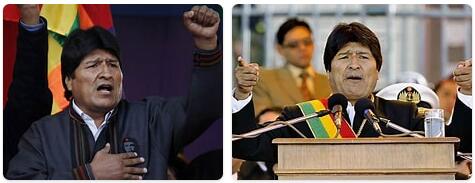Cusco This city is one of the most ancient world capitals. Cuzco (the name translates as “the navel of the earth”) was, according to legend, founded by the first ancestors…
Climate in Argentina According to aristmarketing, Argentina has a wide range of climates: from tropical regions in the northeast to subtropical regions in the north and temperate climates to the…
Peru can be described as an entire continent in one country. In Peru you will find everything from the endless desert to the soaring peaks of the Andes and the…
There are daily reports in various media about the depletion of the ozone layer, climate change, dwindling freshwater resources, deforestation, acidification, desertification, air pollution and so on. When it comes…
Training From the very beginning, UNESCO has had as one of its most important goals that all people should learn to read and have access to education. The UN…
Early When Columbus was the first European to see the Venezuelan coast around 500 years ago, the region had been populated for more than 4,000 years. The oldest ceramic finds…
Beginnings When the Spanish sailors landed on the coast of what is now Uruguay from 1515, there were sometimes nomadic Indian tribes living there. The largest group among them were…
Colonial period The first residents of the South American country were the so-called Surinas, an Indian tribe on which the country’s name comes from. However, these had already been driven…
Native American civilizations Archaeological finds point to human settlement in the area of what is now Peru from around 12,000 BC. there. At first, people only lived as hunters and…
Colonial period Before the Spaniards conquered the area of today’s Paraguay from the northwest in the 30s of the 16th century, Indian tribes lived here as semi-nomads. In 1537 the…
Early times and colonization The first residents of Guiana immigrated to the region around the first millennium BC. It is believed that the Warrau Indians were the first and later…
Early period until the 18th century Findings from the highlands of Ecuador date to around 10,000 years before the beginning of the Christian era. The ceramic finds from the Valdivia…
Early period until the 15th century Ceramics found in the region, which are among the oldest in the New World, are estimated to be around 5000 years old. From around…
Early to modern times The prehistoric excavations in Chilean territory, which are among the oldest finds, can be found in Calama in the province of Antofagasta and point to traces…
On the Argentine-Brazilian border, Iguassú Falls are roaring with the force of 275 individual falls over an area of more than three kilometers. The rumbling water plunges into the 90-meter…
Early history to modern times The southern Titicaca basin, which had city-like centers, formed the historical-cultural center of Bolivia at the beginning of the Christian era and dominated large parts…
Early to modern times Archaeological finds indicate that in some areas of the current state territory since 10,000 BC. Collectors and hunters lived. The northwest of the country in particular…
Whether you are about to visit the old Swedish colony of Saint-Barthélemy or anywhere else in this wonderful part of the South America, there is every reason to review its…

















